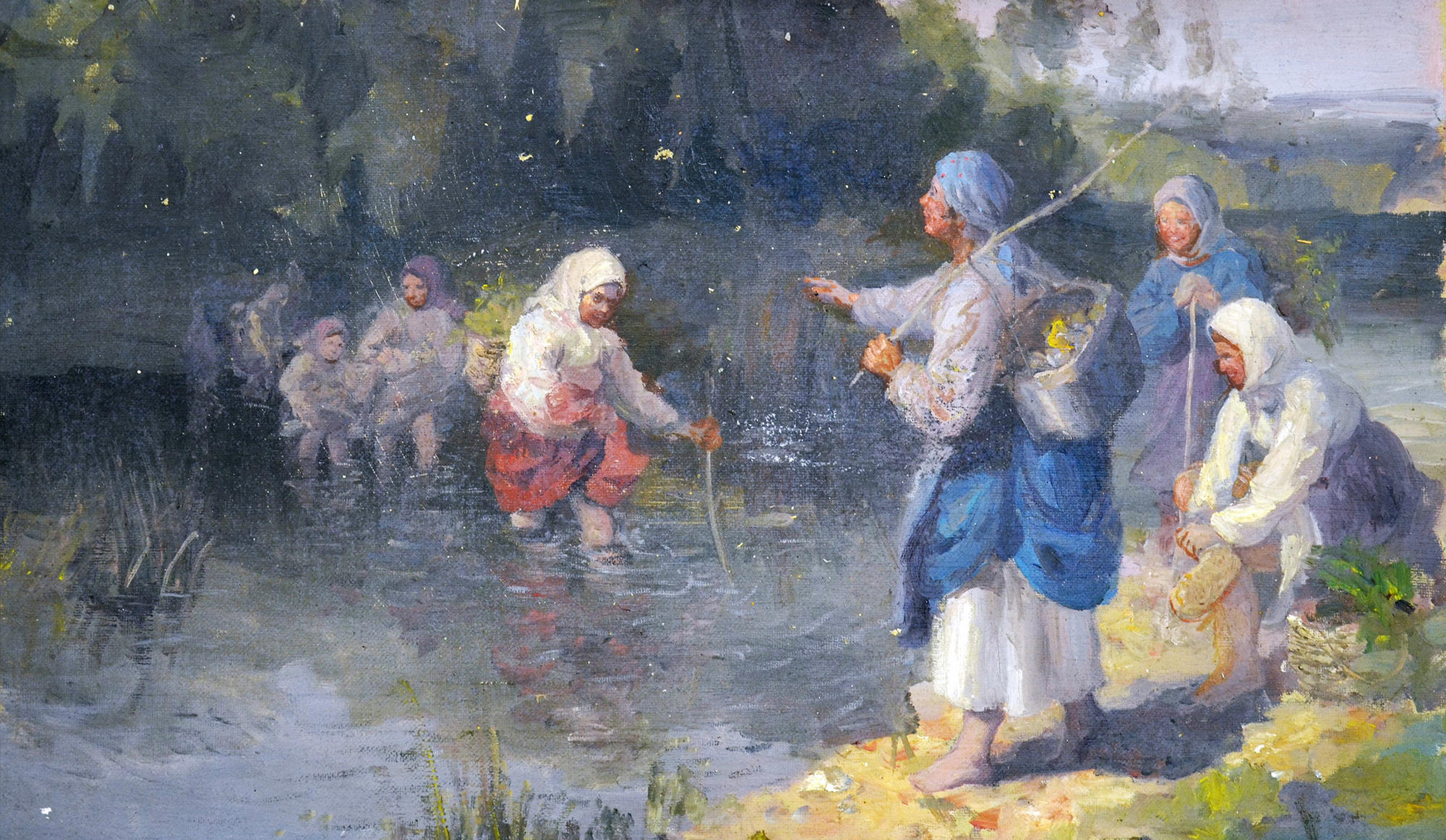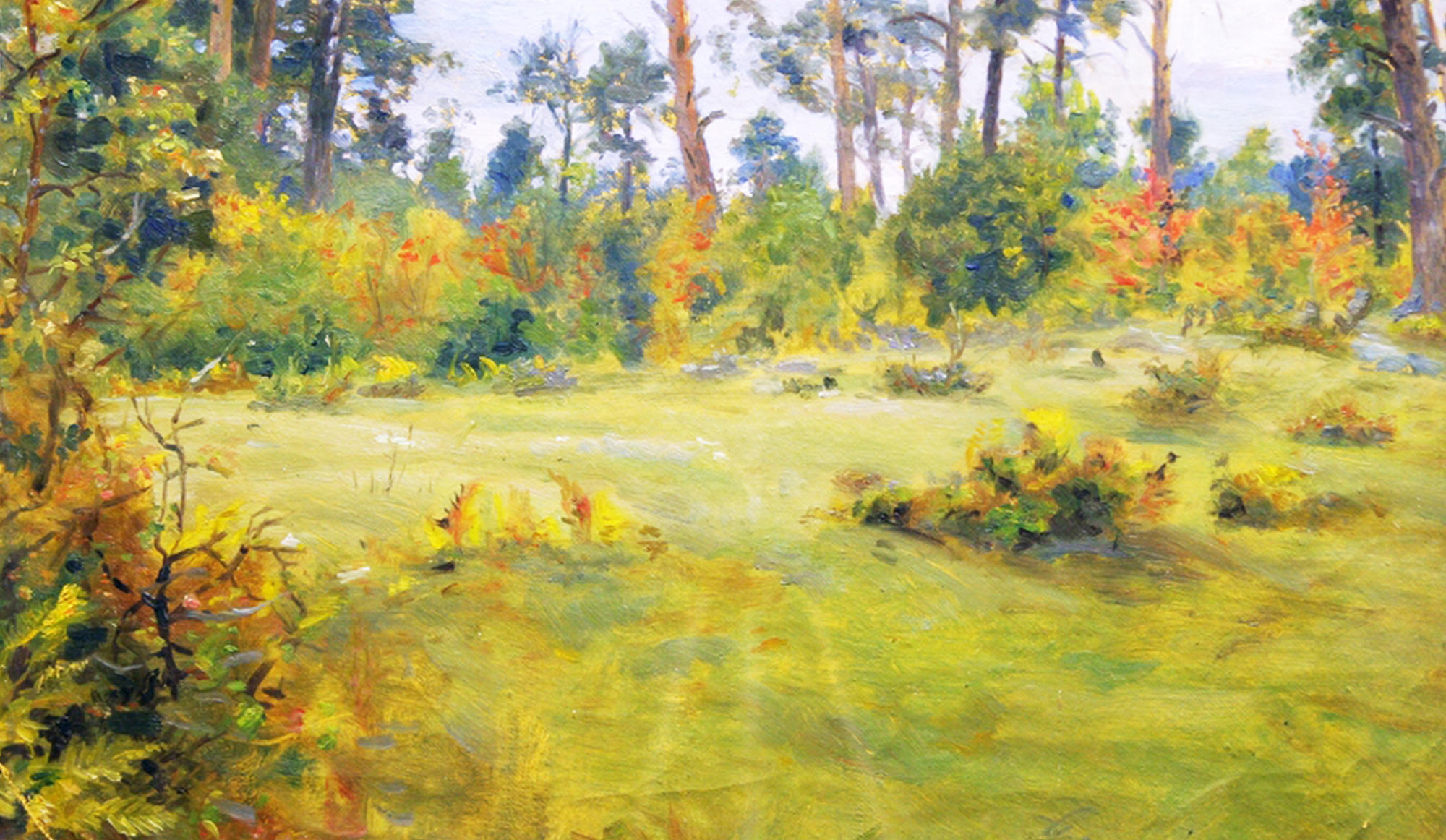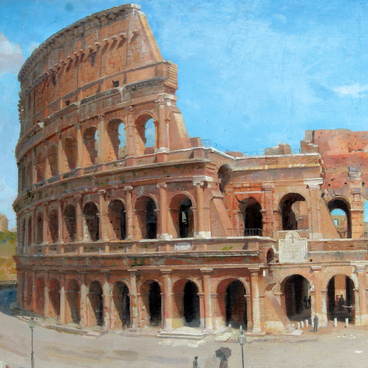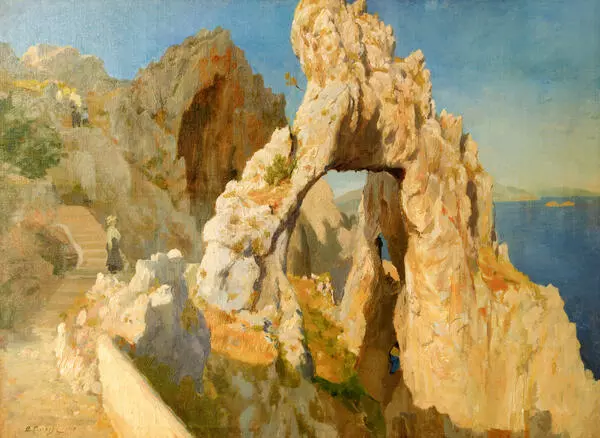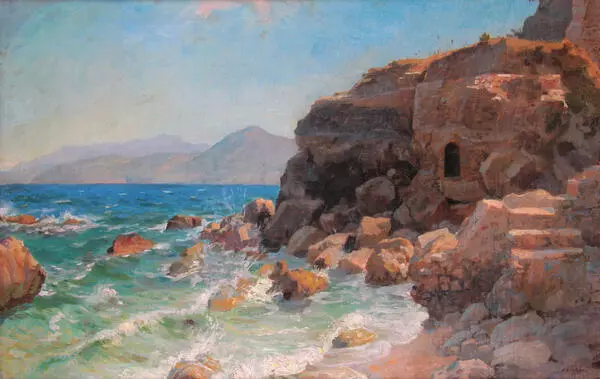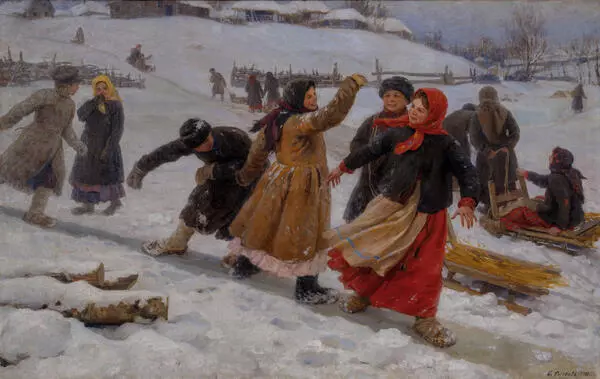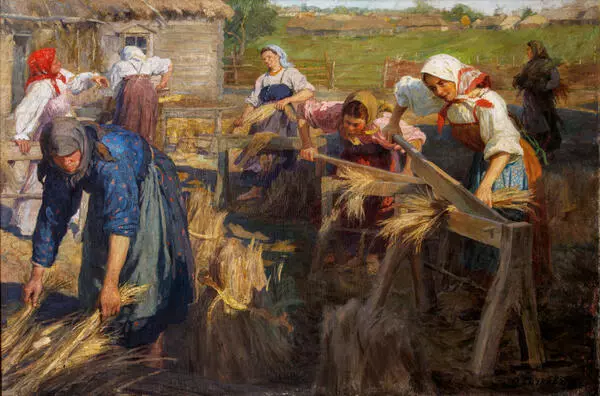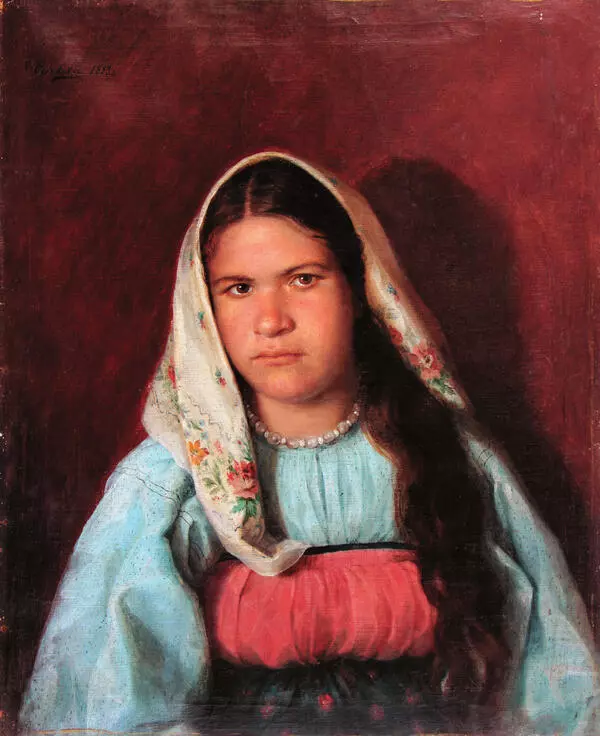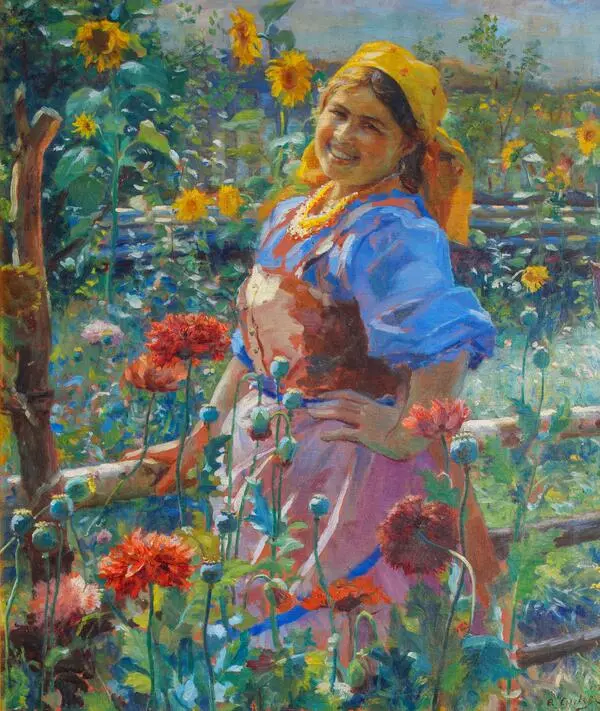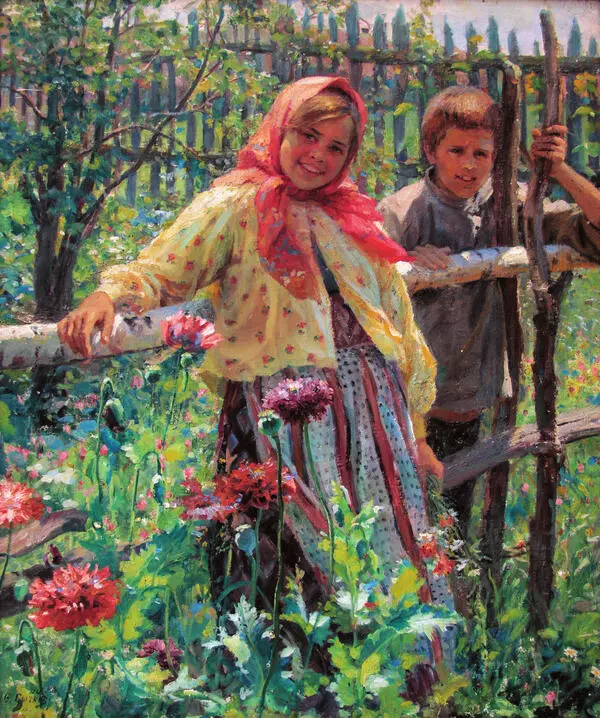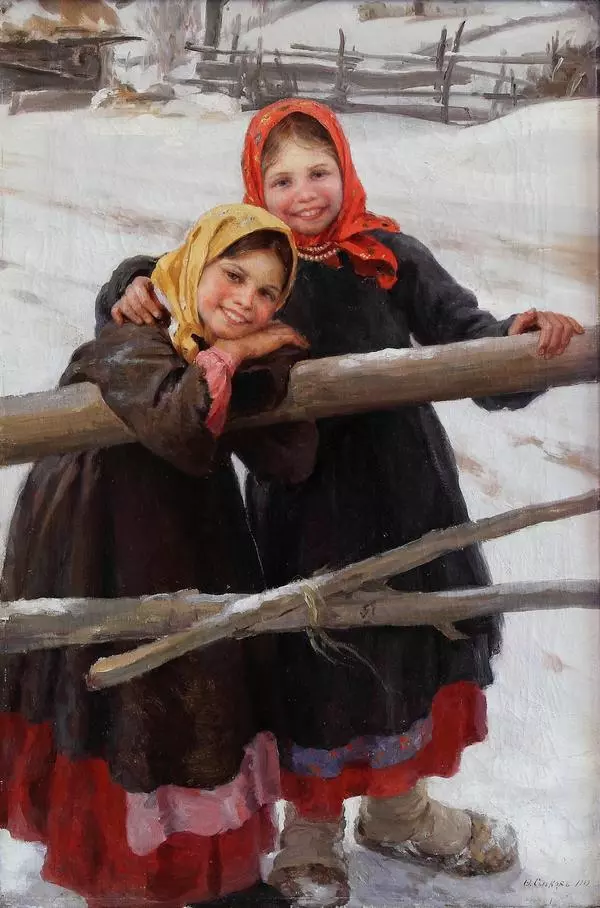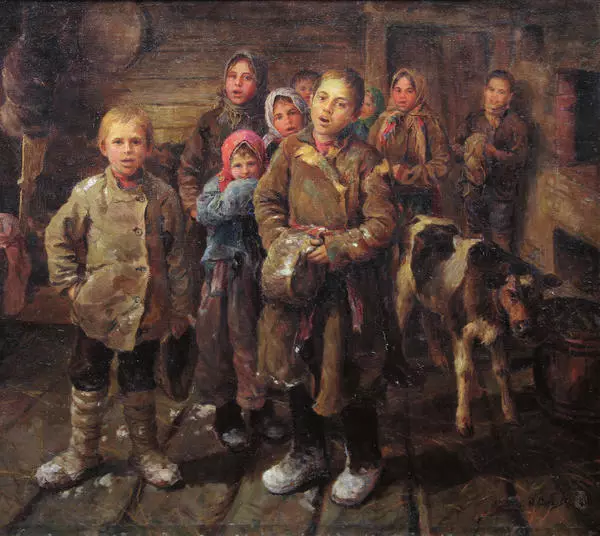On the canvas ‘Hard Crossing’, created in 1912, Fedot Sychkov depicted mushroom pickers returning from the forest. They carry baskets overfilled with mushrooms and bunches of rowan. The artist managed to truthfully convey their emotions: their anxiety, fear, and cheerful laughter. The variety of ages, characters, and costumes provides many subtle details that could only be conveyed by a person who deeply knows and loves the life of these people. A lively young woman, an old woman, who bends over and cautiously crosses the stream, an impassive boy — the artist gave each of them their own bright character.
Fedot Sychkov constructed the composition on two diagonal lines: the string of people moves along one, and the narrow river flows along with the other. The artist arranged the figures and alternated between the bent and straightened poses. All this gave a specific rhythm to the picture and emphasized how difficult was the balancing on the shaky perches of the bridge. The water ripples are another element that brings liveliness to the action. With the upper frame of the picture the artist cut off the autumn forest; and with the lower one, he hid part of the bridge and legs of the young villager. Such composition creates the impression that this moment was snatched right from life and brings the viewer as close as possible to the characters of the scene: one unwittingly becomes a participant in the entertaining crossing of the river on the unstable bridge made out of thin aspen logs.
The museum collection houses many sketches, which the artist created for this composition. He made many sketches of different characters and separate little details. Later, Fedot Sychkov made several repetitions and versions of this painting. In 1911, a canvas of the same name received an incentive prize at the International Exhibition in Rome (Exposizione internationale di Roma, Mostra di belle arti). The location of this work, unfortunately, is unknown. The author’s repetition of 1912, displayed in the permanent exhibition of the museum, was awarded in 1913 at the “Spring Exhibition” in St. Petersburg with the fourth prize in the genre art section. This canvas was moved here in 1963 from The State Russian Museum in Leningrad.
Fedot Sychkov constructed the composition on two diagonal lines: the string of people moves along one, and the narrow river flows along with the other. The artist arranged the figures and alternated between the bent and straightened poses. All this gave a specific rhythm to the picture and emphasized how difficult was the balancing on the shaky perches of the bridge. The water ripples are another element that brings liveliness to the action. With the upper frame of the picture the artist cut off the autumn forest; and with the lower one, he hid part of the bridge and legs of the young villager. Such composition creates the impression that this moment was snatched right from life and brings the viewer as close as possible to the characters of the scene: one unwittingly becomes a participant in the entertaining crossing of the river on the unstable bridge made out of thin aspen logs.
The museum collection houses many sketches, which the artist created for this composition. He made many sketches of different characters and separate little details. Later, Fedot Sychkov made several repetitions and versions of this painting. In 1911, a canvas of the same name received an incentive prize at the International Exhibition in Rome (Exposizione internationale di Roma, Mostra di belle arti). The location of this work, unfortunately, is unknown. The author’s repetition of 1912, displayed in the permanent exhibition of the museum, was awarded in 1913 at the “Spring Exhibition” in St. Petersburg with the fourth prize in the genre art section. This canvas was moved here in 1963 from The State Russian Museum in Leningrad.

